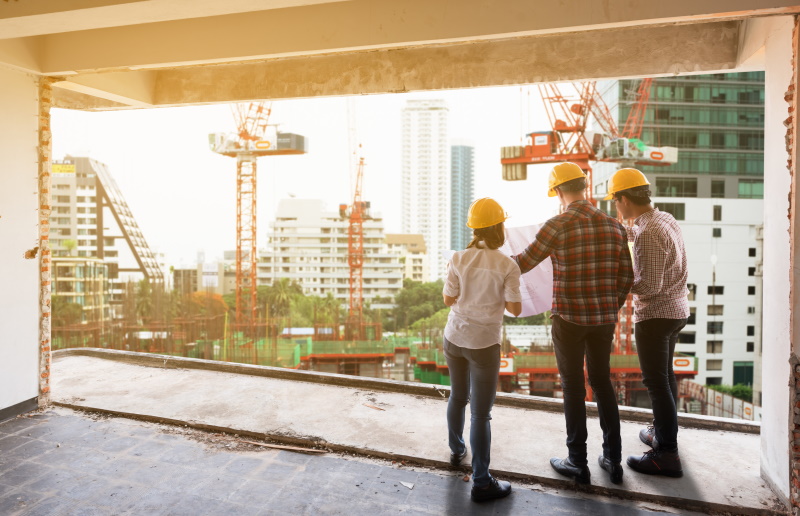The design development is complete, the construction documents are done, and you’ve selected a contractor. Congratulations! You’re moving into one of the most exciting phases of your architectural design project: construction.
During this phase, contractors will begin the task of building your dream, and with it comes the essential task of construction administration.
Construction Administration Purpose
A building or remodeling project has lots of moving parts, and someone needs to oversee them to ensure everything moves along as it should. I often liken construction administration to conducting an orchestra: every player is a competent professional with special skills, but without the conductor to make sure everyone is playing the same tune at the same pace, things can fall into disharmony and chaos.
Construction Administration Decisions
The main decision you’ll need to make as you move into this phase is who will be responsible for construction administration.
As the primary designer and the person with an understanding of both the project’s overall technical demands and the client’s needs, the architect is best positioned to ensure all the pieces fit together and progress as they should.
During construction, the contactor and the architect work in tandem toward the goal of building your project. Each has a crucial role to play. The contractor makes sure the quality of the work is high and to spec while keeping the jobsite safe. The architect ensures that the integrity of the design is kept intact.
On a typical construction site, there are many small adjustments that need to be made and changes accommodated, requiring decisions from the client, the architect and the contractor together.
Examples of issues that could come up include:
- The selected fixture is back ordered for 6 months, we need a replacement.
- The color chosen for the tile isn’t available, what will be the replacement?
- The client wants a change; how will we make it work without jeopardizing the design, budget or timeline?
During construction, the architect is on site and meets with the contractor weekly. She keeps the project moving forward by making timely decisions informed by her comprehensive knowledge of the project’s needs. She is also there to catch errors early and save time/money on redoing work. The architect also needs to approve shop drawings (drawings that subconsultants make before they build a part of the project like cabinetry, millwork, etc.) and check that every small detail fits correctly into the bigger picture. The architect will keep the client in the loop and consult when necessary.
Construction Administration & Deliverables
The main deliverable at the end of the construction phase, is, of course, your completed project. Along the way, however, you and your architect may determine certain milestones at which you receive a formal or informal report on the project’s progress.
Even with the best design and planning, almost every construction project runs into (hopefully minor!) problems; the construction administrator should bring these to your attention in a timely way and offer potential solutions. This is another reason the architect is critically important in this role; she sees the project’s big picture and can act as a “translator,” explaining sometimes technical details in a way the client can understand, and effectively conveying a client’s concerns and needs to the contractor.
Costs
The costs of the construction phase will depend on your agreements with the architect and contractor. You may be expected to pay for labor in regular increments or in a lump sum at the completion of certain milestones.
If there are any unforeseen problems that require significant changes, a change order will be written. This will likely increase costs, and the changes will have their own timeline and pricing structure.
Some architects charge a fee for construction administration; I don’t, because I believe it is an integral part of my role, so it is included in my design fees, but practices vary between architects. To avoid any surprises, ask your architect at the start of your project what her practice is, and make sure any additional fees are specified in your contract.
This post first ran in 2019.


